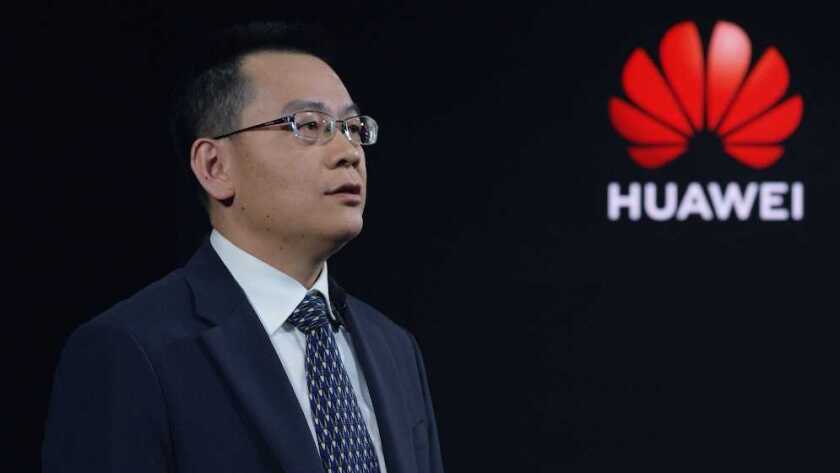The industry needs to work hard to overcome increasing energy consumption, slow construction and inefficient operation and maintenance, warned Huawei’s Zhou Taoyuan in a speech.
The large-scale and rapid construction nowadays has brought huge challenges to energy infrastructure.
With the rapid development of the digital economy, energy solutions face many challenges – such as energy consumption, long construction periods, difficult operation and maintenance and low operational efficiency, which have become major contradictions.
These were the dilemmas presented by Zhou Taoyuan, speaking at the opening of the recent Huawei Better World Summit 2020 Power Digitalization 2025.
Zhou, president of Huawei’s digital power product line, warned that electricity costs greatly eroding the profits of operators is a key pain point.
At the same time more than 60% of the 10-year total cost of ownership of data centres goes on electricity cost. Increasing power efficiency is key to data centre profitability, said Zhou.
Lengthy construction periods are a problem, he added. “It is difficult to obtain 5G sites, and it is difficult to connect mains power, which has become a bottleneck restricting the rapid construction of 5G.”
That is also the case with data centres: “The traditional construction mode of data centre is lengthy, usually requiring more than 18 months.” In other words, infrastructure cannot be provided fast enough. “Business development requires new models and speeds.”
Add to all that, high operation and maintenance costs, said Zhou. “Traditional energy management is based on typical dynamic environment monitoring, with low digitisation, resulting in low operational efficiency and high operation and maintenance costs.”
Zhou welcomed visitors to the online summit. “At this special moment, we are gathered together with customers and experts from all over the world to discuss the energy target network under digital transformation.”
He pointed out: “With the rapid development of emerging technologies such as 5G, cloud, big data, and the internet of things, a digital revolution has kicked off.”
This is “opening up the digital age with everything seen, everything interconnected and everything intelligent”, he said. This means that “connected, omnipresent intelligence” is becoming a reality, and “5G and big data centres have become important cornerstones of this change”.
“In terms of 5G network construction, the number of 5G base stations in the world currently exceeds one million. Global 5G users will reach 190 million by the end of 2020 and 2.8 billion by the end of 2025,” added Zhou.
Meanwhile, the number of rack cabinets in global data centres will continue to increase in 2020. There were more than 17 million in 2019, he said, and he said the number is going up by a million a year.
“As a leader in global digital infrastructure, Huawei has proposed to meet these key challenges,” said Zhou.
“Energy, as the foundation of the digital world, has become a key part and one of the important competitiveness factors of the digital economy. The whole industry needs to pay more attention and increase investment.”
To solve these problems, “the whole industry needs to pay more attention and increase investment”, he said. It needs to “combine traditional energy technology with digital technology, and provide simple, green, smart and reliable digital energy solutions” using energy digitisation and what he called “bit management watts”. This will help solve the problems and challenges faced by traditional energy, said Zhou.
“Use the target network architecture to guide the planning, construction, operation and maintenance and operation of digital energy infrastructure to help the high-quality and rapid development of the digital economy,” he added.
Huawei wants to add 5G without adding site energy-related OPEX, said Zhou. This solves the problem of increase in operating costs through what he called the “three reductions and one open source” approach.
Zhou listed the specific measures. The aim is to reduce site rent by shrinking the size, and to “reduce energy consumption through module-level, site-level, and network-level high-efficiency solutions”. In addition, he said, other innovative solutions can help – by reducing electricity costs, for example.
Operation and maintenance costs can be cut “through site digitisation and intelligent operation and maintenance”, improving operational efficiency.
“For data centres, Huawei proposes a simple, green, smart and reliable next-generation data centre target architecture,” he said, with the aim “to solve the challenges of long data centre construction cycles, high energy consumption, and difficult operation and maintenance”.
Data centre architecture needs to be restructured through modularisation and prefabrication. The construction period needs to be cut from 18 months to less than six months to meet the needs of rapid business launch.
“Reconstruct the power supply link to achieve safety and reliability,” said Zhou – replacing copper with silicon and lead with lithium. Use digitalization for predictive maintenance. Rebuild the temperature control system with more wind and less water, with digital technology for energy saving.
Better power usage effectiveness could “achieve extreme energy saving”, said Zhou., “restructure the management system, realise automatic driving of the data centre operation and maintenance, and reduce operation and maintenance costs”, he added.
“Next, we will invite customer representatives from all over the world to share with us the energy goal network,” he said. “Huawei will work with global operator customers to face the opportunities and challenges brought about by the digital world and inject green source power into the future sustainable development of operators.”





